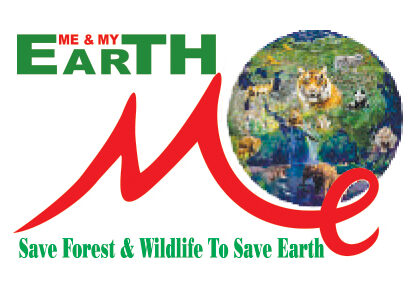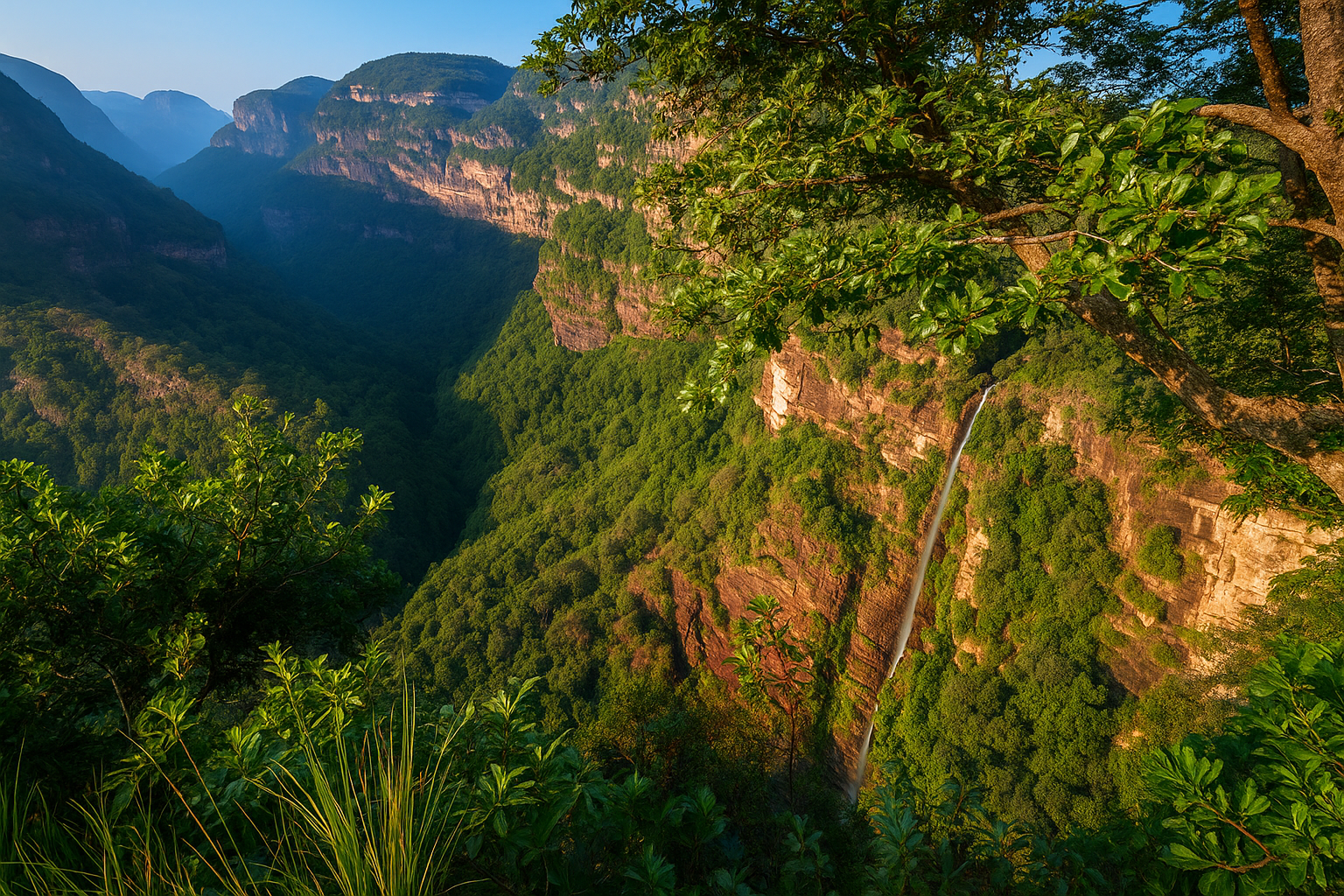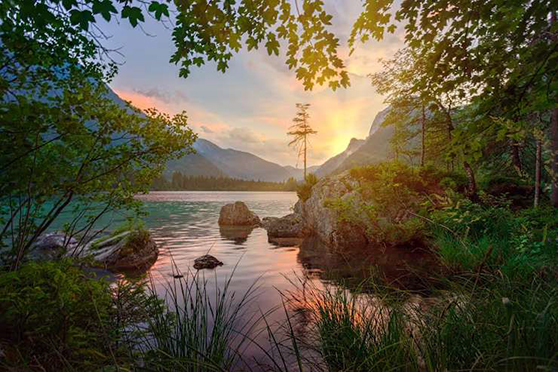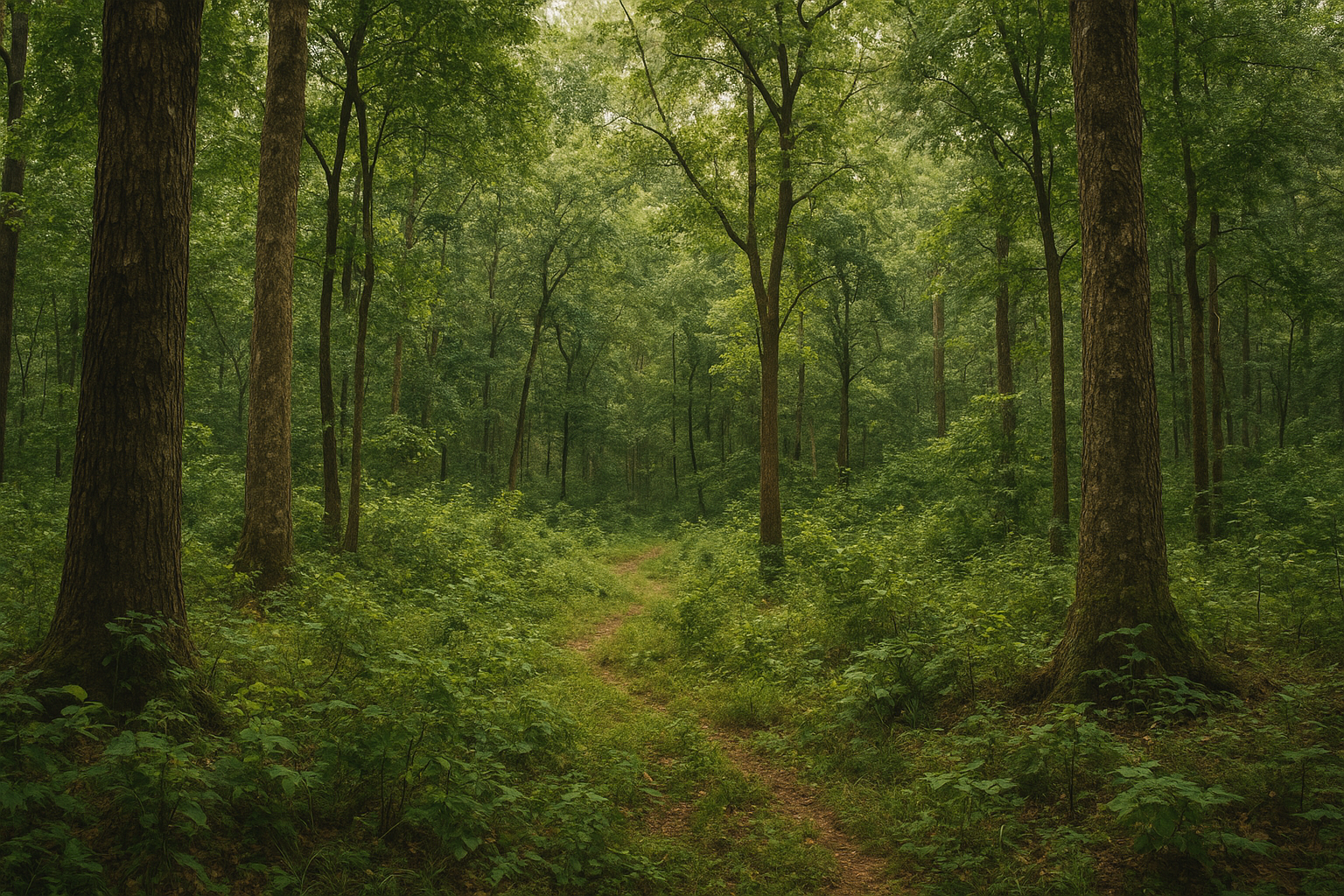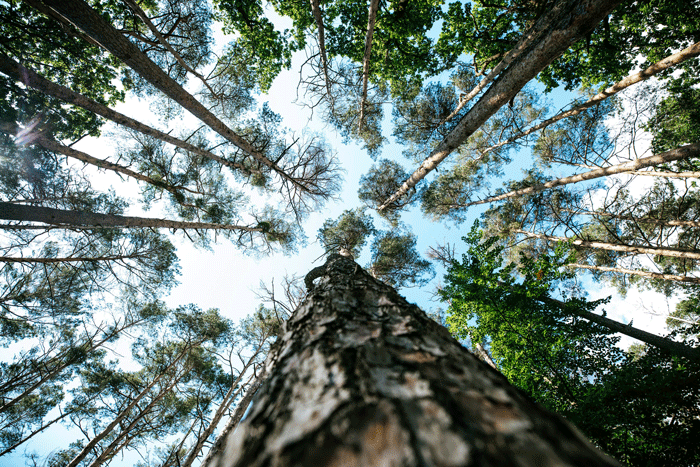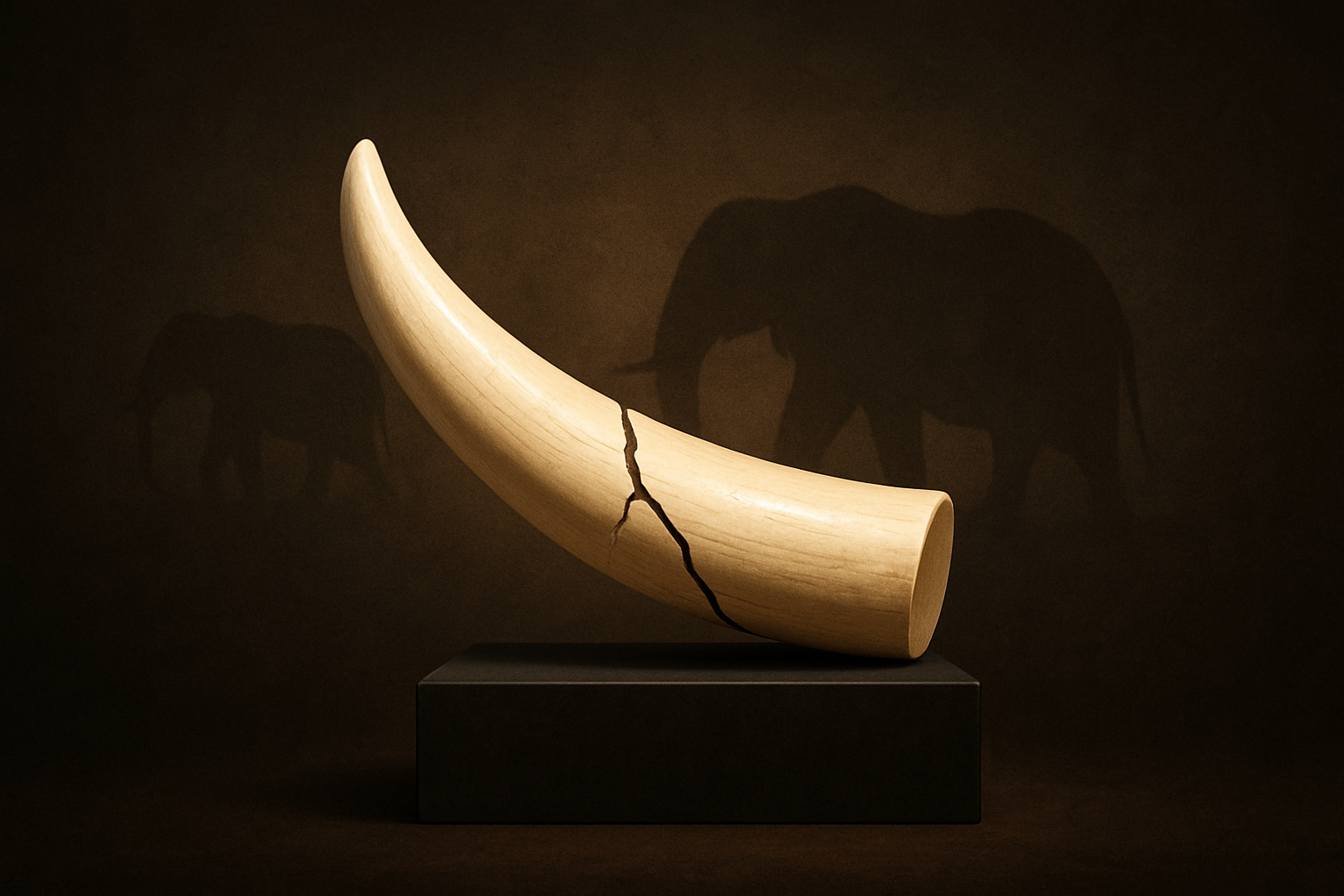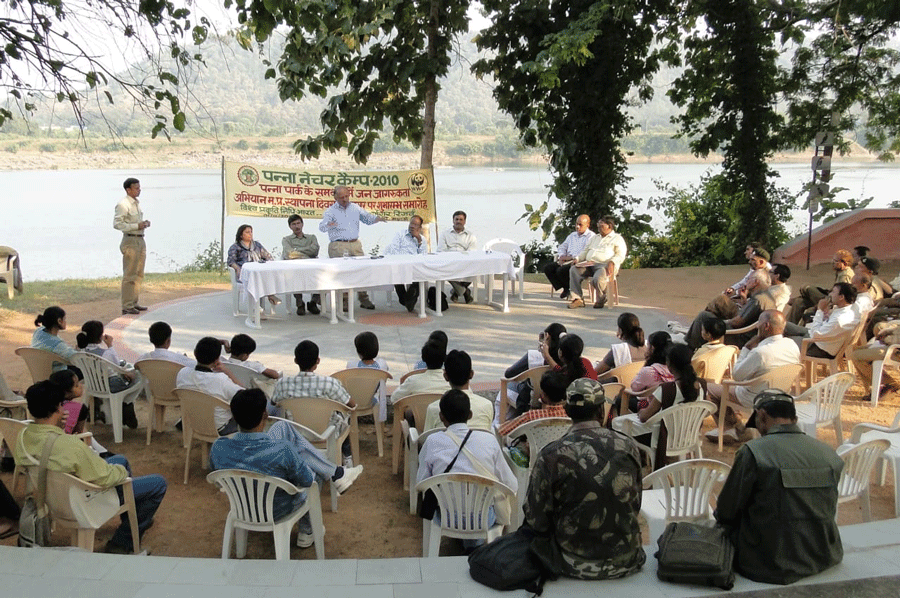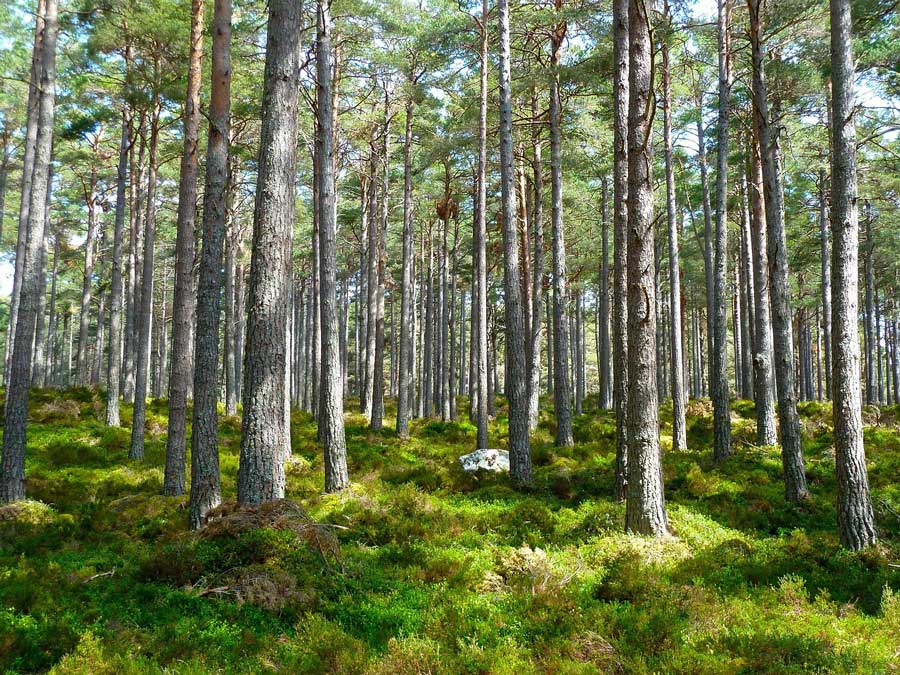BASIC CONCEPTS OF ECOLOGY AND ENVIRONMENT
Compiled by Jagdish Chandra
1.0 INTRODUCTION
The common concern for the very survival of the humankind even amidst plenty has inter alia drawn attention to issues of ecology and environment. One finds terms like ‘environmental issues*, ‘ecological concerns’, ‘biological backlashes’, etc. being used frequently in most forum discussing matters of public interest. The terms environment and ecology are freely mixed. But the two words have separate and specific scientific meanings. ‘Ecology’ is a branch of biology dealing with relationship amongst living organisms and their relationship with the surrounding” environment. All those things which influence an organism and its living process are collectively called ‘Environment’. Environment is both biotic (living) and abiotic (non-living).
The term ‘ecology’ was coined in 1878 by a biologist named Earnest Haeckel from the Greek words ‘oikos’ meaning dwelling and ‘logos’ meaning study. Literally, therefore, ecology means home science. Today it has an entirely different meaning. As already mentioned, the term broadly means the study of the interrelationships between and amongst organisms and environment. An adequate definition of ecology must specify the unit of study that is unique and basic to ecology. The basic unit is the ‘ecosystem’. Thus ecology may be defined as the study of the ecosystems.
1.1 SYSTEM CONCEPT IN ECOLOGY
An ecosystem is an integrated unit and formed by the interaction of co-acting organisms and their environment. In this unit, the survival of the interacting plants and animals depends upon th<< maintenance of abiotic (physico-chemical environment such as heat, light and moisture), as well as, biotic structures and functions. How living organisms interact with the abiotic environment in an ecosystem and in fact, survive through this, is not difficult to imagine. Oxygen in air is used for respiration, carbon dioxide and light for photosynthesis in plant species, water as a body fluid for many physiological functions, climatic stability for smooth physiological processes, etc. and any change in those conditions will affect the life processes of the organisms. In the geological history of the world extending to millions of years, species have appeared and disappeared mainly because of episodes of climatic change. The interaction of species in an ecosystem is equally important. The survival and sustenance of the evolutionary process is made possible because of this.
The Biotic and Abiotic Components of an Ecosystem
An ecosystem operates in the biosphere, the part of the earth where the atmosphere (air), the hydrosphere (water) and the lithosphere (land/soil) have met and through their interaction, life has become possible. Any ecosystem in the universe can be very small like a pond to a very large lake. In both the types, microbes, planktons, insects and fishes interact amongst themselves and the environment to survive, sustain and evolve. There are various types of ecosystems, e.g., ponds/lakes, deserts (hot and cold), tundra, grasslands, (prairies, steppes, veldt, etc.), savannas and forests (evergreen, deciduous, etc.). In each of the types, based on the regional climate, soil type and other abiotic conditions, characteristic (unique) species of living beings develop. Penguins in cold deserts (and not in hot ones), jaguars in rain forests, sharks in tropical oceans, giraffes in savannas are few examples of unique species in specific ecosystems.
The biotic components of an ecosystem consist of 3 types of organisms: Producers, consumers and decomposers which are shown in Figure 1.1.
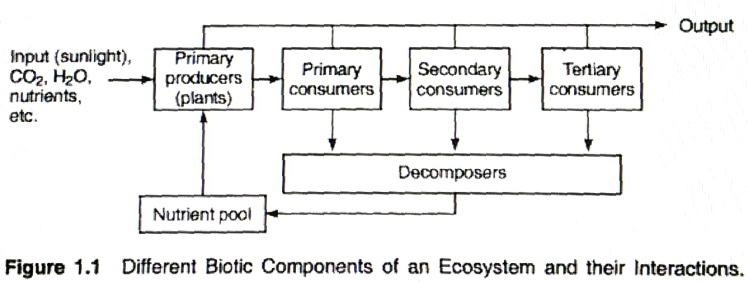
Sun is the ultimate source of life in this plant. The first step of food production is done by the green plants through photosynthesis where carbon dioxide and water combine to form carbohydrate with the help of sunlight. Chlorophyll containing plants, from tiny phytoplanktons in water to large trees, are capable of doing this. These organisms are the autoirophs or primary producers, which produce their own food from the primary production through photosynthesis and plant nutrients taken from soil. No other organism is capable of synthesizing its own food. Many organisms feed on the primary producers. For example, herbivores like cows, deers, etc. in a terrestrial ecosystem feed on grass, which is the primary producer. They are called consumers. Those organisms which exclusively feed on the primary producers (herbivores) are the primary consumers. Carnivores like lion, tiger and snake feed on the herbivores (primary producers). They are called the secondary consumers. In this way, consumers exist at different levels. These levels are called trophic levels. When organisms die, some detritus eating insects and animals like termites, vultures, etc. feed on their body and ultimately convert them to plant nutrients which are released through excreta, urine, etc. Similarly some microorganisms, mostly present on the top of the soil, like some bacteria and microfungi also convert the dead tissues to nutrients released to the soil. All those organisms which help in the decomposition of dead tissues and material tissues are called decomposers.
Productivity
Primary production refers to the amount of solar energy fixed by autotrophic plants possessing chlorophyll. The rate of this production is called the primary productivity. It can be expressed in terms of body weight {say kg) of primary producers (or its energy equivalent) formed per unit area (say m2) per unit period (generally, a year). A part of the gross primary production (GPP) is utilized for the maintenance of the plant (e.g., respiration). The remaining net primary production (NPP) is converted to biomass.
As per the published data of primary production in different ecosystems, the tropical rain forests, estuaries, mangroves, man-made agriculture and aquaculture systems produce more. Areas under environmental stress, like deserts and tundras, have low production. Rain forests, estuaries, mangroves are considered eco-sensitive and therefore, efforts are made to protect such areas. It is wise to avoid establishment of the industries, unless otherwise absolutely necessary, in such areas.
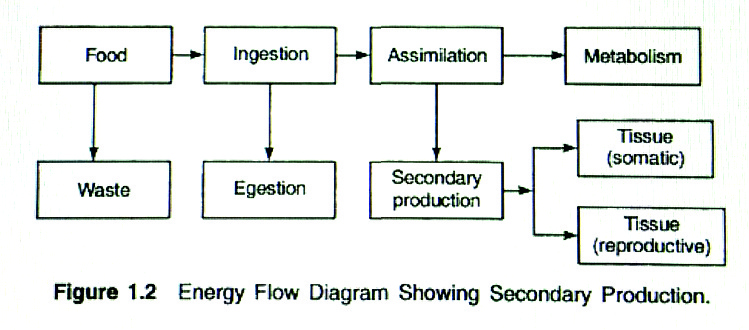
Secondary productivity refers to productivity of heterotrophic organisms like herbivores, carnivores and decomposers. It is the net amount of energy transferred and stored in the tissues (somatic and reproductive) of heterotrophs over a period of time. The following energy flow diagram is useful to understand this. (Figure 1.2)
Heterotrophic organisms feed on net primary production and also on other heterotrophic organisms. Production by heterotrophs in the ecosystem is called secondary production because it does not involve the primary step of solar energy utilization. Warm-blooded animals like birds and mammals assimilate about 70-80% of the food consumed but spend about 90-95% of this for metabolism. Thus, only 6% or less of the consumption is converted to secondary production. In cold-blooded animals like prawns and some fishes, assimilation of food is about 20-40% of consumption but the secondary production accounts for 50-70% of the assimilated energy. Thus, aquaculture of fishes and prawns is more energy saving practice than rearing of farm animals and hence, more profitable. Fish and prawn should be targeted more than farm animals for future animal protein requirement of the burgeoning world population.
Food Chains and Food Webs Plants, grass, etc. produce heir own food by photosynthesis. Herbivores food on these organisms. Carnivores feed on herbivores.

Larger carnivores even feed on smaller carnivores. This sequence of a series of organisms which feed on one another is called thee food chain. Examples of food chain are:
The food chain is not always linear but quite often complex in nature due to interlinking of chains. Such succession of species in interlinked chains are shown as food webs (Figure 13). Food chain studies help us in understanding the feeding relationships and interdependence between organisms in an ecosystem. They also help to understand the energy flow and material circulation in an ecosystem. What is particularly important for pollution scientists is the problem of biomagnification or bioaccumulalion of toxic substances. Some toxic pollutants, released into nature are not easily biodegradable. Such pollutants are heavy metals (e.g., mercury and lead), pesticides (e.g., DOT), etc. After such a substance enters the body tissue of an organism from polluted environment, its concentration in the tissue increases rapidly to a level much higher than that in the environment. This concentration goes on increasing from one trophic level to another as the substance enters into and moves up in the food chain. This phenomenon of cumulative build-up sequentially through the food chain of specific substances is called bioaccumulation or biomagnification. Organisms in higher trophic levels are naturally more bioaccumulative. Man, being a creature at a very high trophic level, suffers more from this. The concentration of a toxic substance in the natural polluted environment (say in a lake) may not be high but may exist at a dangerous level in the tissues of some organisms (say fish) which, if consumed by human beings, can be hazardous to health.
In the sixties, a curious disease showing symptom of crippling limbs was observed amongst many inhabitants along the Minamata bay in Japan. The disease named after the place of occurrence as Minamata disease, is ascribed to mercury poisoning. The bay was, at that time, polluted with mercury by the industrial discharges from factories situated along its coastline. Mercury slowly gets converted to methyl mercury in the natural aquatic environment through complex biochemical processes. Methyl mercury, being soluble in water, easily gets into the tissues of aquatic organisms. Mercury enters the biotic system at the lowest level through phytoplanktons. When it reaches the large fishes through the food chain, its concentration is biomagnified. The biomagnification was observed to be as high as 30,000 in some edible variety of fishes of the Minamata bay. In other words, the concentration of mercury in the tissues of some fishes was 30,000 times more than that in water! Japanese are fond of fish and eating such fish regularly resulted in mercury poisoning. Occurrence of Minamata disease brought into limelight the serious health hazards of mercury. It is believed that the sharp decline of some bird species in recent years is due to the bioaccumulation of some toxic substances in the environment-like DDT, in their tissues.
Energy Flow
An autotroph (primary producer) traps solar energy and converts it into chemical energy, which is stored in the body tissues of the plant equivalent to the NPP. This can be partly retrieved by burning the plant as fuelwood. When the plant is eaten by a herbivore (heierotroph), only a pan of the chemical energy stored in the autotroph (NPP) goes to the body of the herbivore (secondary production) following the second law of thermodynamics. The fraction of the NPP which is stored in the body tissues of the herbivores is about 10%. In a similar way, about 10% of the chemical energy stored in the body of a herbivore is transferred into the body tissues of a carnivore when it feeds on the herbivore. This inefficient conversion of plant energy to animal energy has an implication in our food habits. Consumption of meat of a farm animal means, consumption in terms of energy, of ten times of animal feed. Thus, meat-eating, particularly eating farm animals reared with grains, means depriving world’s hungry population of much larger quantities of cereal food. This is, therefore, environmentally aggressive, apart from being harmful for health. Some economists fear that the rising trend of meat-eating of the affluent section of population may result in a shortfall in the supply of cereal food for human consumption in future India.
Material Cycling
All organisms, from microscopic viruses and bacteria to large mammals are composed of matter which require many elements for iheir life processes. These elements, about 40 in number, are the nutrients essential for the growth of the organisms. The dominant constituents of matter, of which the organisms are composed, are carbon, nitrogen, oxygen, hydrogen, potassium, calcium, magnesium, sulphur and phosphorus. These are called the macronutrients. There are also some elements required in trace quantities (excess of these may have toxic effect). They are the micronutrients. Elements like iron, manganese, copper, zinc, boron, molybdenum, vanadium, cobalt, chlorine and sodium belong to this category. All these nutrient elements, both macro and micro, circulate between the organisms and the environment in circular paths called the biogeochemicaf cycles. These cycles are of two types.
1. Gaseous cycles, where the paths are predominantly in the atmosphere (e.g., carbon, oxygen and nitrogen cycles).
2. Sedimentary cycles, where the paths are predominantly in the lithospherc (e.g., sulphur and phosphorus cycles).
Understanding these cycles helps in the unravelling of the functioning of the ecosystems. Environmental damage, including environmental pollution, interferes with these cycles and therefore, with the smooth functioning of the ecosystems. Some of these cycles are not predictable because of heavy pollution. A few of these cycles are briefly discussed here.
Oxygen cycle. Oxygen is an important element, which cycles predominantly in the atmosphere, hydrosphere and biosphere (Figure 1.5). It circulates mainly as O2, HjO and CO2. In sediments and rocks, it exists mainly as carbonates and silicates.
Carbon cycle. Figure 1.6 shows the carbon cycle Plants and animals play a very important role in the carbon cycle Combustion of carbon being the main source of energy used, the carbon cycle, in reality, depicts energy cycle.
Phosphorus cycle. It is shown as an example of sedimentary cycle (Figure 1.7).
Nitrogen cycle. Nitrogen is the main plant nutrient and hence its natural cycle is presented here. (Figure 1.8)

Balance of Nature
The various organisms, belonging to many species, existing in an ecosystem, interact amongst themselves to occupy the same space. The following are the types of interactions.

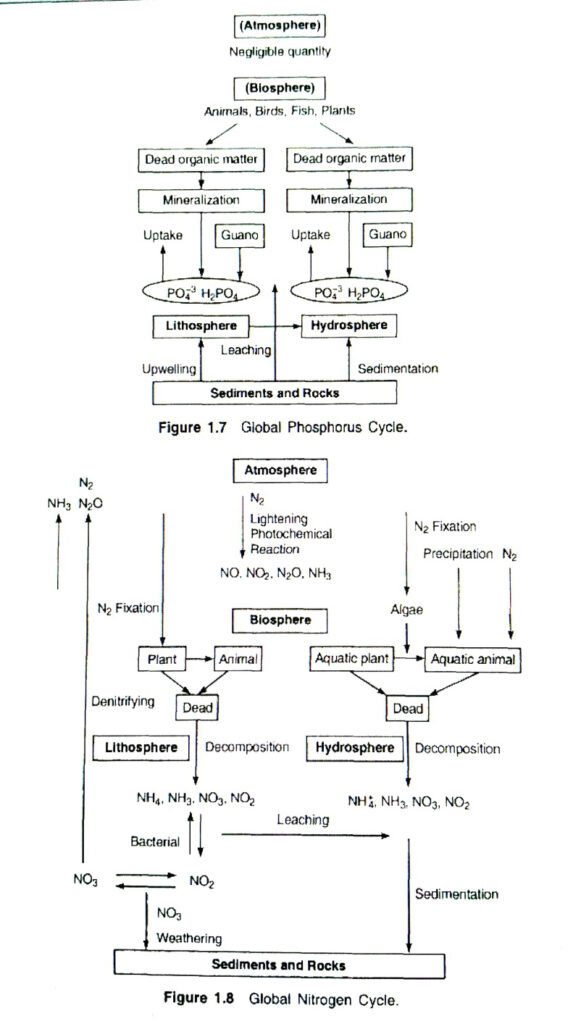
Interaction is said to be positive if one or both the interacting organisms benefit from the interaction am) none loses anything. In a negative interaction, one of the organisms is definitely harmed The ecosystem thrives through these population interactions and the natural balance is thus maintained Both positive and negative interactions are essential. The following illustration of a forest ecosystem explains this.
When the deer population in a forest decreases, it adversely affects the tiger population. Devoid of the major source of their natural food, these predators turn to hunting domestic animals in the nearby villages or even to human beings. This adversely affects the population of other living creatures in the forest. If on the other hand, the tiger population is decreased, deers will multiply rapidly. They will devour all the grass leading to substantial reduction in grass cover. Deer population will explode spreading beyond the forest area to the adjacent agricultural lands destroying the crops when they feed on them. Natural balance demands that optimum number of deers and tigers coexist in a forest.
The relative importance of the species vis-a-vis another, with which it does not directly interact, is not clearly understood. Fishermen consider Otter as their enemy as it feeds on fish. Once fishermen shot down all Otters in an area in the USA and discovered later that it caused a decrease in fish population. It was subsequently realized that Oner mostly kills old and diseased fish. Elimination of Otter resulted in spread of diseases in the fish population. Scientists believe that if the insect population on earth disappears completely, survival of mammals, including human beings, may be at stake. Almost all flowering plants will disappear within decades. Insects cause pollination of flowers in many crops without which food production will not be possible. More diverse the species and genetic distribution (biodiversity), greater is the interaction and stability of the ecosystem. Biodiversity provides flexibility to the ecosystem to adjust to any stress situation. If one of the species is affected due to an environmental stress in a diverse system, another species having similar function can sustain the ecosystem. Conservation and restoration of biodivesity are major aspects of environmental protection. Impact of a proposed development project on the biodiversity of the region is an important consideration before the project is decided to be taken up.
1.2 BIODIVERSITY
Biodiversity (biological diversity) is the variety and variability of plants, animals and microorganisms, including genes, within organisms and ecosystems where species live. It is defined as The totality of genes, species and ecosystems in a region or the world (WRI, IUCN, UNEP). Biodiversity is realized at 3 levels.
Genetic diversity. Distinct populations observed under one species due to variation of genes.
Species diversity. Different species living in a region or the world (also called richness of species).
Habitat or ecosystem diversity. Different ecosystems exist in a region or the world. Each ecosystem is an assemblage of distinct group of species.
VALUE OF BIODIVERSITY
The importance of biodiversity conservation has been realized by most people by now. Three classes of reasons are put forward to justify the conservation: (i) ethical and aesthetic, (ii) commodity-economic and (iii) ecological.
The ethical and aesthetic value of biodiversity cannot obviously be quantified but is certainly of great concern to many. Biodiversity has served the humanity in the form of food, fibre, fodder, fuel, drugs, building materials, etc. The staple food plants of today such as rice, wheat and maize were derived by selective breeding from their wild relatives. One should not think that the species under cultivation are enough to supply all our diverse needs and that the enormous germplasm available in hundreds and thousands of species of plants and animals are useless in the days of advancement of biotechnology. Even now plants are the major source of medicines. There are about 3000 antibiotics extracted from microorganisms. These antibiotics include life saving drugs like penicillin and tetracycline. The ecological value of biodiversity provides stability and sustains evolution.
Reservoir of Biodiversity
The present geological era perhaps enjoys the maximum biodiversity. Scientists have so far been able to identify approximately 1.4 million species. This, in fact, is a small fraction of the actual species diversity which is estimated to be more than 10 million. This at best is an approximation. The terrestrial ecosystems are more rich in species diversity than the marine ones in a ratio of about 7:1. We have no idea about genetic diversity. As per the World Development Report, 1992, Table 1.1 gives the data on estimated number of species in the world.

Maximum diversity (hyperdiversity) occurs in certain taxa. Likewise certain habitats/ ecosystems contain maximum number of species. Tropical rain forests and coral reefs exhibit maximum species diversity. In general, species diversity increases as we go from the poles to the equator. Worldwide there are seven ‘megadiversily1 regions. These are Mexico and Central America, Amazon basin, Central Africa, China, Indian subcontinent. Equatorial Asia, and Australia. They cover twelve major nations, viz., Brazil, Colombia, Equator, Mexico, Peru, Malagasy, Zaire, China, India, Indonesia, Malaysia and Australia. All the 12 nations, except Australia, belong to the developing world. Biodiversity is, therefore, an invaluable asset of the developing countries which they should conserve and capitalize for their benefit. Genetic resource is a very important natural resource for biotechnology.
Erosion of Biodiversity
Species get extinct in the natural evolutionary process. The natural extinction rate (at times other than mass episodes) estimated from fossil data, is of the order of one per ten million species a year. We are witnessing the largest extinction rate for the last few decades. This rate is accelerating over years, since the period of dinosaur extinction. There is no reliable estimate of the current extinction rale because the total number of plants and animals in rich diversity regions, like Brazil and Central America, have not been assessed. As per the most optimistic prediction, about 5% of the existing species on earth will be extinct in the next 50 years; the most pessimistic estimate is about 35%. On the basis of the most optimistic or conservative prediction of 5% loss, no less than 50,000 to 60,000 known plant and animal species, apart from a large variety of invertebrates and microorganisms, will be lost in the next 50 years. The process of extinction will still continue thereafter. Our knowledge about extinction of species is confined to large and more developed species. As per the report of the IUCN (International Union for Conservation of Nature), since 1600, more than 700 known species of vertebrates, invertebrates and vascular plants have been recorded to be extinct from the surface of the earth. Two-thirds of world’s bird species are endangered and one out of 10 faces extinction. Out of the total 4,771 known reptile species, 169 are direatened. More than the species diversity, the genetic diversity, particularly in plants, is probably shrinking at a much faster rate which has not been adequately noticed and recorded. In Indonesia alone, die local rice varieties that have became extinct in the last 15 years number is as high as 1500.
Causes of Biodiversity Loss
The two major reasons of erosion of biodiversity are: (i) habitat destruction due to large ‘developmental projects’ like building of dams and highways, establishment of industries, mining activities and population pressure leading to encroachment into species-rich forests, wetlands, etc. and (ii) propagation of ‘monoculture’ in agriculture, forestry, fisheries and animal husbandry for so-called ‘better economic returns*. Over-harvesting, pollution, inappropriate introduction of exotic plant and animal species, hunting and luxury trade of animals and plants also contribute to this process of erosion.
Conservation of Biodiversity
Legal methods. The Wildlife (Protection) Act, 1972 gives statutory protection to specific areas like reserved forests, wildlife sanctuaries and parks and biosphere reserves. It also provides statutory protections to endangered wildlife. The Forest Conservation Act, 1980, prescribes for mandatory clearance from the Central Government for any conversion of forest land for nonforest use. Compensatory aforestation is always insisted when such conversion proposal is cleared. At the international level, the Convention on International Trade on Endangered Species (CITES) prohibits trading of rare plants and animals. These are only a few examples.
Protected areas. As already mentioned, attempts are made to protect plant and animal species in protected areas, viz. reserve forests, wildlife sanctuaries and parks, and biosphere reserves. Reserve forests are the ones where only the Government has rights over the trees. Sanctuaries are areas where a particular or a group of species are protected and made to proliferate. The focus is on those species which are rare or rapidly reducing in population. In biosphere reserves, nature is allowed its full play and there is practically no human interference. The only human activity allowed in the core areas of the biosphere reserve is non-invasive scientific research/study.
Gene banks. Conservation of genetic diversity is difficult. Attempts are made to preserve genes ex-situ m laboratories.
Awareness generation. All attempts towards biodiversity conservation will not be possible without people’s participation. They should be sensitized to the issue through media and mass awareness programmes.
1.3 ΑΒΙΟΤIC COMPONENTS OF THE ENVIRONMENT
The abiotic components of the environment are
(i) the atmosphere,
(ii) the hydrosphere and
(iii) the lithosphere.
It is essential to have some preliminary discussions about these components to appreciate the subject matters of the book in the subsequent chapters.
The Atmosphere
The envelop of gases around the earth extends up to about 200 km which is called the atmosphere. However, about 50% of the total mass of atmosphere lies within 5 km radius.
Different layers
The atmosphere can be divided into several layers on the basis of temperature variation. In the bottom layer of troposphere where we live, temperature decreases with the rise in altitude at a rate of about 6°C per km. Tropopause, the upper boundary of the troposphere, does not lie at the same altitude around the earth. Tropical tropopause lies at about 16-18 km, whereas the polar tropopause lies at about 9-10 km. Clouds, rains, storms, etc. constituting the whole water cycle is confined to the troposphere only. This layer is the most turbulent layer of the atmosphere. Most of the man-made pollutants exist in this region only. Exchange of material through the tropopause is slow in either direction.
The physical properties of the stratosphere, the next layer above the troposphere, are similar to those of the troposphere except that there is a reversal of temperature gradient at higher altitude and the temperature rises to about 10-20°C at an altitude of about 60 km (stratopause). Mixing-both vertical and horizontal-within the stratosphere is quite marked with strong horizontal air current. Very little water vapour is present in this layer.
Mesosphere is marked by the fall of temperature to about-70°C. The highest layer is called the thermosphere (also known as the ionosphere) where the temperature rises rapidly. This temperature rise is due to the absorption of high energy radiation by molecular oxygen and nitrogen, some of which are ionized.

Compiled by
Editor, Publisher and Owner of
ME & MY EARTH Magazine.
A Post graduate in Chemistry & IFS Batch 1990.

